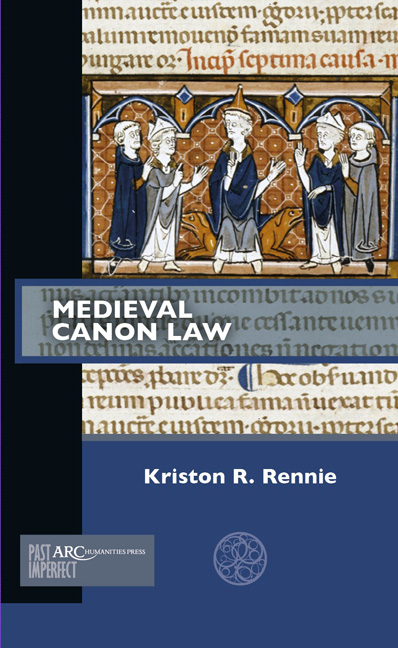Chapter 4 - Rationale
Published online by Cambridge University Press: 27 January 2021
Summary
Collections of canons served manifold contemporary purposes. Yet their precise, calculated impact is sometimes hard to measure from a twentyfirstcentury vantage. Fortunately, we are occasionally left with descriptions that shed light on: the readers and compilers of these legal compendia; their methodologies and intended audience; and their application in the medieval European world in which they were created. As the best surviving evidence of medieval canon law, prefaces to these collections provide a good starting point to help explain the rationale underpinning it.
The late ninthcentury Collectio Anselmo dedicata, dedicated to Archbishop Anselm II of Milan (882–896), epitomizes all these attributes. As the author noted in his dedicatory prologue, he was gathering and arranging “together in one work the teachings of the sacred canons, which from the earliest days of the Christian faith the masters of the holy, catholic Church, namely, the apostles and the popes, have set down in the writings for the instruction of posterity.” The need to undertake such an arduous task relates to the preexisting discordance of canons, for which the author sought some trustworthy harmony. To this end, he “decided to divide all the pages of the canons, councils, and decretals of the Fathers into twelve parts, following the model of apostolic pedigree …” Prefaced statements, otherwise known as rubrics, were deliberately placed in front of each canon, “as specific and most truthful witnesses,” “clear testimony” pointing to “an open entrance for the eager reader to find what he seeks.” As for the collection's intended purpose, the structure of its twelve books provides a pretty good indication; beginning with the primacy of Rome and the ecclesiastical hierarchy, it then moves to clerical duties, right order, and judgement in councils, the dignity of office and orders, clerical life, monastic vocation, the laity, standards of Christian faith, baptism, the disposition of temples of worship, Easter, and finally heretics, schismatics, Jews, and pagans.
Significantly, the need to create reliable collections animates many authorial intentions. The compiler of the ninthcentury PseudoIsidorian Decretals was “compelled,” he said, “by many, both bishops and the rest of the servants of God, to collect the sentences of the canons and to assemble them in one volume, and to make one out of many.”
- Type
- Chapter
- Information
- Medieval Canon Law , pp. 47 - 58Publisher: Amsterdam University PressPrint publication year: 2018



